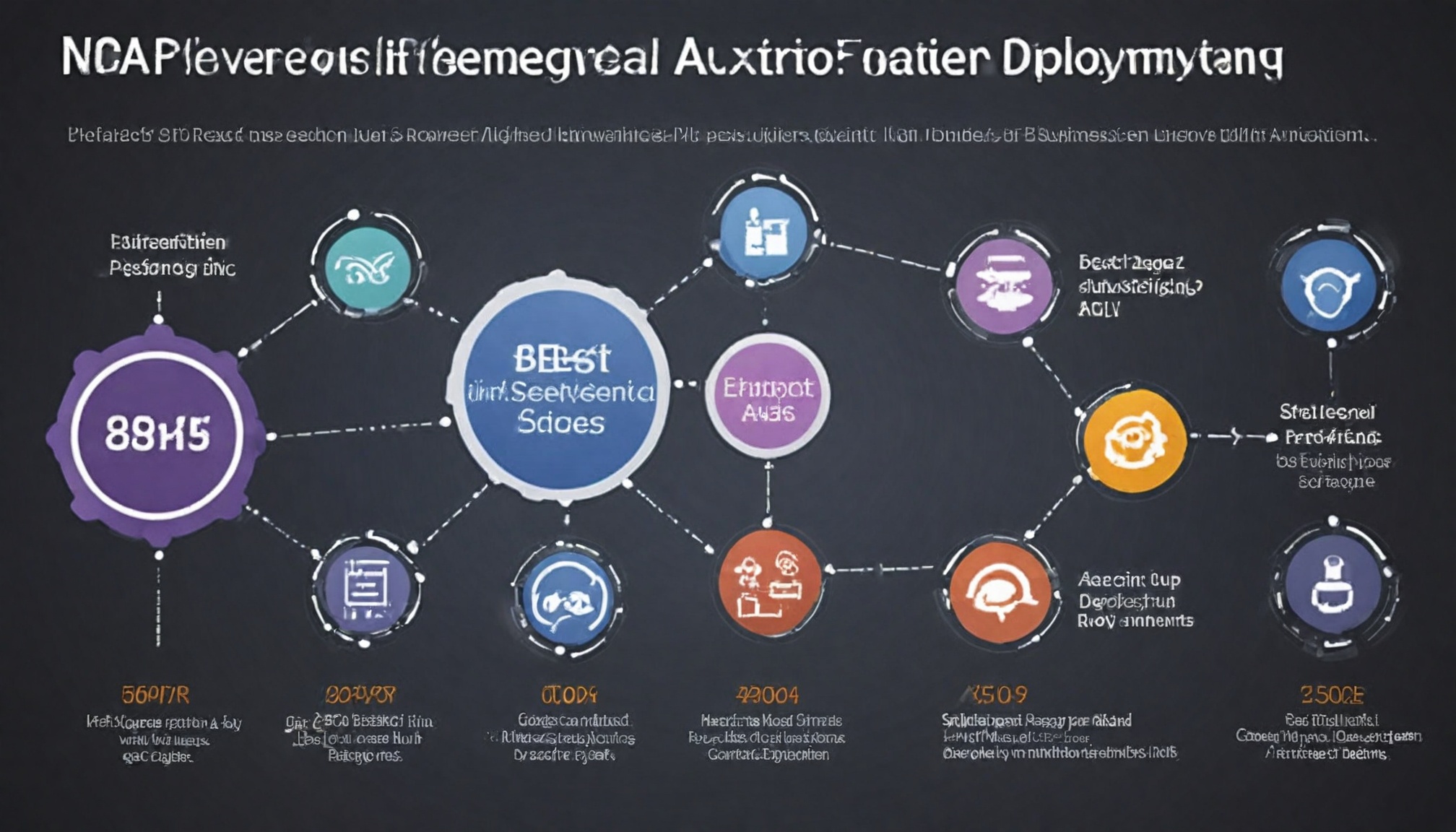
Deploy Nova Act MCP servers on AWS Fargate for scalable, serverless browser automation with AI capabilities, eliminating infrastructure management while ensuring security.

Drivetech Partners
AWS Fargate offers a powerful serverless platform for scaling Nova Act MCP server deployments without the complexities of managing underlying infrastructure. By implementing best practices for running Model Context Protocol servers on Fargate, organizations can build scalable, cost-effective browser automation solutions that leverage AI capabilities while maintaining security and performance.
Key Takeaways
Serverless container execution eliminates infrastructure management overhead while providing isolation between tasks
Proper networking configuration with private subnets and load balancers ensures security and scalability
Implementing stateless architecture enables efficient scaling and resource utilization for browser automation workloads
CloudWatch monitoring provides essential visibility into resource usage and potential bottlenecks
Following security best practices with encryption, IAM policies, and regular updates is crucial for production deployments
Understanding AWS Fargate for MCP Server Deployments
AWS Fargate provides a serverless container execution environment that eliminates the need to manage servers or clusters. This makes it ideal for running Model Context Protocol (MCP) servers, which transform general-purpose Large Language Models into AWS specialists by combining deep AWS knowledge with AI capabilities.
Fargate supports several platforms including Amazon Linux 2 (platform version 1.3.0), Bottlerocket OS (platform version 1.4.0), and Windows 2019 Server editions. One of the key security benefits is that each Fargate task has its own isolation boundary - tasks don't share kernel, CPU, memory, or network interfaces with other tasks.
When deploying MCP servers on Fargate, you must use the awsvpc network mode for all tasks. This network mode gives each task its own elastic network interface, providing the same networking properties as EC2 instances.

Architecting Your MCP Server Deployment
For consistent and repeatable deployments, I recommend using AWS CDK for infrastructure as code. This approach ensures your environment can be reliably recreated and updated with version control.
When designing your network architecture, implement private subnets with NAT gateways for secure outbound connectivity. This setup prevents direct internet access to your MCP servers while allowing them to reach external services as needed.
For traffic distribution, configure the appropriate load balancer based on your needs:
Use Application Load Balancer (ALB) for HTTP/HTTPS traffic distribution
Use Network Load Balancer (NLB) for TCP/UDP traffic (requires platform version 1.4+)
Set target type as "ip" for target groups (not "instance")
For serverless HTTP handling, consider using Express with serverless-express or Lambda Web Adapter. These tools make it easier to deploy stateless browser automation workloads for AI-powered interactions without managing long-lived server instances.
Resource Management and Technical Specifications
Fargate tasks using platform version 1.4.0 or later come with 20 GiB ephemeral storage by default. This storage can be increased up to a maximum of 200 GiB if your application requires additional space. For tasks launched May 28, 2020 or later, this storage is automatically encrypted with AES-256 encryption managed by Fargate.
For workloads requiring process tracing, Fargate supports adding the SYS_PTRACE kernel capability. This can be crucial for certain debugging or monitoring scenarios.
When designing your application, implement session ID management for stateless operation. This allows your MCP servers to scale horizontally without maintaining state. Similarly, enable JSON response formats for immediate HTTP responses without maintaining connection state, further improving scalability.
Secure Networking Configuration
Security should be a top priority when deploying MCP servers on Fargate. Configure tasks in private subnets for enhanced security and disable the "Assign public IP address" option for Fargate tasks to prevent direct internet accessibility.
Route outbound traffic through NAT gateways to allow your containers to reach the internet or other services while maintaining security. For redundancy, deploy these NAT gateways across multiple Availability Zones.
When configuring load balancers:
Use Application Load Balancer for layer 7 (HTTP/HTTPS) traffic
Use Network Load Balancer for layer 4 (TCP/UDP) traffic
Ensure each service has appropriate target group configuration
Security Best Practices for MCP Server Deployments
For production MCP server deployments, encrypt ephemeral storage with AWS KMS or customer-managed keys to add an extra layer of data protection. Follow the principle of least privilege when configuring AWS credentials, giving services only the permissions they absolutely need.
Implement proper IAM policies for task execution that limit access to necessary resources. This reduces your security surface area and limits potential damage from compromised credentials.
Keep your MCP Servers updated with the latest AWS security practices and run security analysis using tools like CodeQL for repository inspection. After testing, promptly remove or disable any temporary keys or credentials.
The AWS Well-Architected Framework - Security Pillar provides additional guidance that can help you build secure MCP server deployments.
Scaling and Cost Optimization Strategies
To effectively monitor your Fargate deployment, configure CloudWatch usage metrics to track resource utilization. Set up alarms that alert when approaching service quotas to avoid service disruptions.
For cost-effective networking, use private subnets with NAT gateways. Implement resource tagging for organization and cost tracking, making it easier to identify expenses by project or department.
Balance instance size with workload requirements to avoid over-provisioning. Fargate allows you to specify exactly the CPU and memory your containers need, so you can optimize for both performance and cost.
Implement auto-scaling based on traffic patterns and usage metrics to automatically adjust capacity. For non-critical workloads, consider using Fargate Spot to reduce costs significantly, sometimes by up to 70%.
Monitoring and Observability Framework
Comprehensive monitoring is essential for maintaining reliable MCP server deployments. Leverage CloudWatch for detailed metrics on resource usage, including CPU, memory, and network performance.
Configure usage metrics to visualize current service consumption and set up alarms to alert when approaching service quotas. This proactive approach helps prevent resource constraints from affecting your application.
Implement proper logging for troubleshooting and forensics. Ensure logs contain sufficient context for debugging while avoiding sensitive information. Build observability into your deployments from the start rather than adding it as an afterthought.
Track performance metrics to identify bottlenecks and optimization opportunities. For complex systems, integrate with AWS X-Ray for distributed tracing that can help pinpoint issues across multiple services.
Implementation Examples and Patterns
Several implementation patterns have proven effective for MCP server deployments on Fargate:
FastAPI deployment on AWS Fargate with ALB for high-performance async operations
Node.js Express server deployed as Lambda function with API Gateway
Stateless MCP Server configuration using StreamableHTTPServerTransport for efficient communication
Integration examples with Amazon Bedrock and other AI model providers
Support for stdio and SSE transports for different communication patterns
Agent aggregation implementations can reduce system resource usage by sharing resources across multiple concurrent sessions. To manage persistent data across stateless sessions, consider implementing solutions that store session data in external services like DynamoDB or ElastiCache.
By following these best practices, you can build scalable, secure, and cost-effective MCP server deployments on AWS Fargate that support your browser automation workloads while minimizing operational overhead.
Sources
aws.amazon.com - Introducing AWS MCP Servers for Code Assistants Part 1
docs.aws.amazon.com - Amazon ECS Fargate Security
mcp.so - MCP Server with Fargate
github.com - MCP Server with Fargate Repository
community.aws - Model Context Protocol (MCP) and Amazon Bedrock






